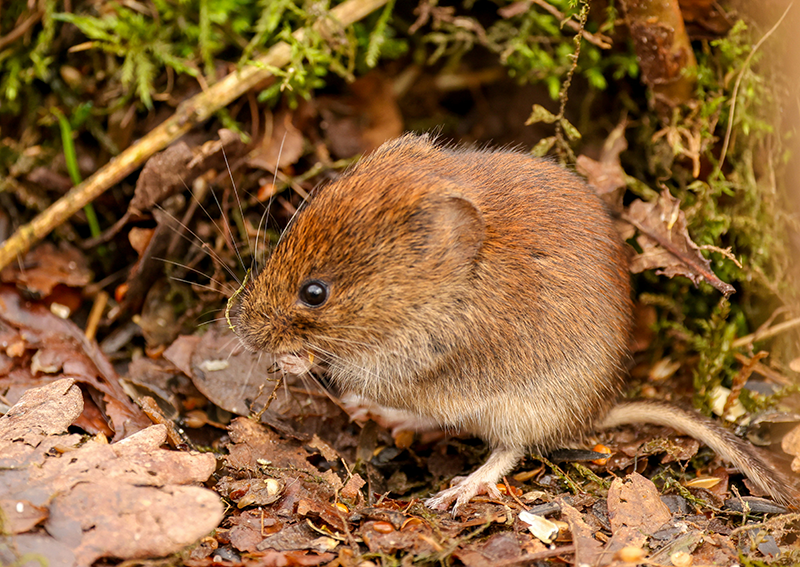Recognizing Vole Yard Damage and Exactly How to Battle It
Recognizing Vole Yard Damage and Exactly How to Battle It
Blog Article
Understanding Vole Insect Control: In-depth Insights on Infestation Prevention and Treatment Approaches
As homeowner and caretakers, the existence of voles can pose a considerable difficulty to maintaining the honesty of our exterior spaces. Recognizing the intricacies of vole actions is critical in establishing effective pest control approaches. By acknowledging the subtle signs of vole invasion early on, we can take positive actions to prevent extensive damages. In this discussion, we will certainly check out the nuances of vole habits, dig into the identification of infestation signs, and reveal the most effective prevention and therapy techniques. Remain tuned to find the insights that will empower you to understand vole pest control and protect your building against these evasive rats.
Understanding Vole Actions
Examining the foraging patterns of voles uses beneficial understandings into their behavior and environment choices. By observing their foraging habits, scientists can get a better understanding of where voles like to develop their environments and the degree of their ecological effect.
Research indicates that voles show selective feeding habits, liking roots, roots, and seeds. This dietary preference influences their foraging patterns, leading them to locations abundant in plants and ground cover. Additionally, voles are understood to create sophisticated tunnel systems for foraging and nesting functions, indicating a high level of flexibility to their surroundings.
Understanding vole actions is important for applying targeted bug control actions that disrupt their environment preferences and foraging tasks (vole yard damage). By examining their actions, specialists can establish much more efficient avoidance and treatment approaches to handle vole invasions

Identifying Signs of Vole Problem
Vole invasions can be discovered by acknowledging specific indicators of their presence in an area. One of one of the most common signs of a vole invasion is the visibility of surface area runways. Voles develop networks of slim paths on the ground that are normally about 2 inches vast. These runways are usually located in grassy locations or beneath compost or ground cover where voles can move openly and search for food.
Another vital indicator of vole invasion is the presence of little burrow openings in the ground. Voles dig superficial burrow systems with multiple entries and leaves. These burrows function as sanctuary and nesting sites for the voles. Additionally, voles are understood to leave behind chewed plant stems, origins, and bulbs near their burrow openings, showing their feeding task in the location.
Moreover, vole droppings can also indicate their existence. Vole droppings are small, brownish, and cylindrical in shape, looking like grains of rice. Finding these droppings along runways or near burrow openings can confirm a vole infestation. By being watchful for these indications, homeowner can promptly attend to vole problems and stop more damages.
Implementing Positive Prevention Measures

Moreover, utilizing natural vole deterrents like castor oil-based repellents or killer pee can serve as effective preventative measures. It is additionally advisable to regularly evaluate outside rooms for any indications of vole task, such as their explanation paths or delve openings, to address potential infestations quickly. vole pest control. By embracing these aggressive avoidance approaches, property owners can dramatically minimize the likelihood of vole damage and preserve the wellness and appearances of their landscapes
Reliable Treatment Techniques
Including targeted capturing approaches and using approved rodenticides are essential elements of reliable treatment methods for handling vole infestations. Regular surveillance and maintenance are additionally key facets of successful treatment approaches to make certain that vole populaces are maintained under control. By incorporating trapping, rodenticides, habitat modification, and constant monitoring, reliable vole bug control can be accomplished.
Surveillance and Upkeep Tips
Regular monitoring allows for the early detection of vole activity, enabling prompt treatment before infestations worsen. To properly monitor vole populations, strategically placed traps can be utilized in vole runways or near burrow entryways.
Additionally, keeping a clean and clean landscape is vital in vole prevention. Clearing away particles, such as piles of wood or thick plant life, removes prospective vole environments. Routinely cutting and mowing grass plant life helps in reducing vole concealing places and reduces their access to food resources.
In addition, continuous upkeep of physical obstacles, such as fencings or cable mesh, is important to avoid vole intrusion. Inspecting and fixing any damages to these frameworks makes certain that vole control stays reliable in securing residential or commercial properties from invasions. By including these surveillance and upkeep practices into a detailed vole pest control plan, individuals can efficiently take care of vole populations and secure their residential properties from damage.
Final Thought
In final thought, grasping vole pest control calls for a strong understanding of vole behavior, the ability to determine signs of invasion, carrying out proactive prevention procedures, reliable therapy techniques, and regular monitoring and upkeep. By taking a comprehensive method to vole control, people can successfully handle and prevent invasions, ultimately protecting check this site out their home and surrounding environment from damage triggered by these little rodents.
In this discussion, we will explore the nuances of vole habits, dig right into the recognition of infestation indicators, and reveal the most reliable prevention and treatment techniques.Including targeted trapping techniques and utilizing authorized rodenticides are essential go to this site parts of effective treatment approaches for handling vole infestations. To properly check vole populaces, purposefully positioned catches can be used in vole paths or near burrow entries. Inspecting and repairing any type of problems to these frameworks ensures that vole control remains efficient in guarding buildings from invasions. By including these surveillance and upkeep practices right into a thorough vole insect control plan, individuals can efficiently manage vole populaces and safeguard their homes from damages.
Report this page